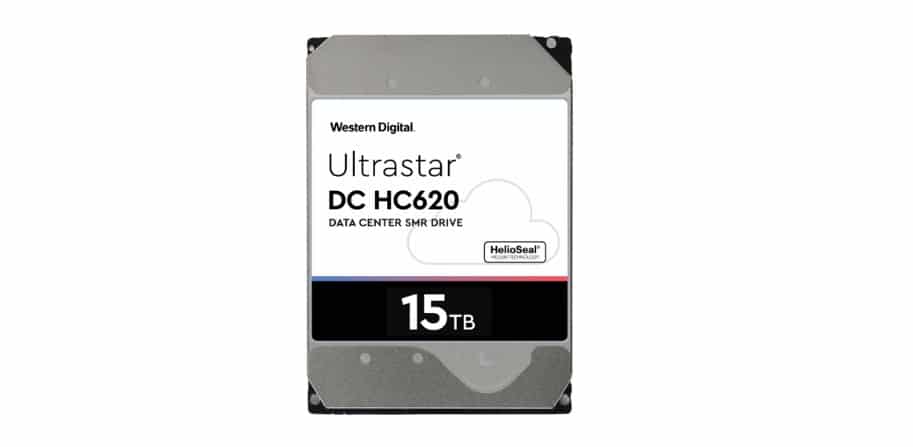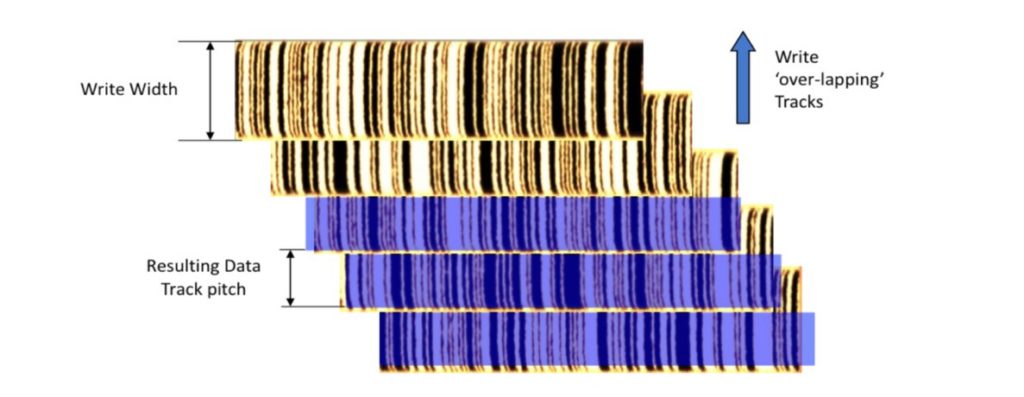15TB HDD – Taking Big Data Capacity to the Next Level
Western Digital’s innovation sets a new bar for TCO with an unprecedented 15TB HDD capacity point. Here’s how the new, helium-sealed SMR 15TB HDD is changing the game for dense storage options.
Our world is hyper-connected. The number of connected IoT devices have already exceeded the world’s population [1] and we’re streaming billions of hours of video every week. [2] Add to that the massive data of video surveillance footage, smart cities and business data, it’s not hard to see why the global datasphere is expected to grow to 100 zettabytes in the next five years. [3]
The good news is that all this data will unlock possibilities and drive immense business opportunities. However, this inertia of growth requires new solutions to simplify management and reduce the costs of infrastructure at scale.
Introducing the Ultrastar®DC HC620 Host-Managed SMR HDD –– Industry-leading 15TB HDD
Today, Western Digital announced our latest industry-leading HDD capacity point at 15TB [4]– the Ultrastar DC HC620 Host-Managed SMR HDD.
This technological achievement in Western Digital’s Ultrastar SMR (Shingled Magnetic Recording) and helium-sealed enterprise-class HDD provides the continued basis for rack-scale data growth expansion and improved TCO, helping to tackle critical challenges of big data growth.
Complementing the data center workload requirements of our Conventional Magnetic Recording (CMR) HDDs, which are meant for random reads and writes, this latest host-managed SMR HDD is optimized for sequential writes and areal density. It enables rack-level scale of higher-performance “sequentialized” workloads such as video surveillance, object storage and cloud services.
These emerging workloads for SMR optimization require data to be written sequentially and that is rarely updated, followed by random and frequent reads.

15TB HDD – Setting a New Bar for TCO
As an addition to the industry’s first 14TB SMR HDD family, the 15TB enterprise-class Ultrastar DC HC620 host-managed SMR HDD reflects another industry first, continuing our tradition of delivering the highest capacity enterprise-class HDDs in the market.
A 1TB gain in the same 3.5-inch form factor is not only significant, but it’s especially compelling for rack-scale TCO. For example, at the 15TB HDD capacity point, the raw storage for a 4U 60-unit HDD SAS or SATA enclosure equates to 900TB. That’s an additional 60TB per 4U of rack space increase from the previous 14TB SMR HDD capacity point.
When you think of at-scale environments where floor space, $/TB, TB per square foot or watts per TB are critical, the TCO savings can be significant.
Safe Cities through Video Surveillance Impact
Safe city video surveillance initiatives are a prime use case example for the Ultrastar DC HC620 SMR HDD. Video surveillance produces a constant data stream, typically running 24×7, which requires the “sequentialized” writes, followed by random reads for processing and archive retrieval.
In addition, there are safe cities surveillance initiatives that require large-scale, high-resolution 4k H.265 compression video with a minimum of 30 frames-per-second to avoid false positives. Storage requirements for just one 4k camera using H.265 at 30 fps storing footage for 180 days, can be 28TB as shown by the Western Digital Surveillance Storage Capacity Estimator.
Read How Augmented Intelligence Turns Everyone into a Data Scientist on Data Makes Possible
When you combine this video resolution with hundreds or thousands of cameras and a typical 180-day retention period, having the best possible storage TCO is a must to help enable the realization of safe city surveillance initiatives.
Shingled Magnetic Recording – Driving Improved Areal Density
SMR uses a unique “overlapping” writing technique to pack more bits into the same space. This is achieved by writing data sequentially then overlapping (or “shingling”) it with another track of data. By repeating this process, more data tracks can be placed on each magnetic surface.

Because of the shingled format of SMR HDDs, all data streams must be organized and written sequentially to the media. To take advantage of this, customers must optimize their file systems and underlying applications. This may take some time, but can ultimately pay dividends long term since SMR drives provide lower cost per TB and better TCO when considering the capital and operating cost of the data center.
Here’s a great example:
Ultrastar SMR HDDs in Action at Dropbox
One of our customers, Dropbox Inc. (NASDAQ: DBX), has adopted SMR HDD technology by Western Digital to meet critical time-to-market milestones for its ‘Magic Pocket’ infrastructure.
We’ve written about Dropbox’s successful journey, and the benefits of host-managed SMR approach, earlier this year. The Dropbox architectural approach using SMR HDDs is available on their blog site.
Host-Managed SMR Implementation and Ecosystem Support
Cloud and data center architects can evaluate its benefits with application stack and underlying Linux® kernel requirements with this implementation guide. We also describe more about SMR in this white paper.
In addition, Western Digital is committed to the continued expansion of the SMR ecosystem across operating systems, independent software vendors, hardware vendors (HBA vendors) as well as contributions to open source software.
Expect further SMR support in file systems and Linux kernel support in various distributions. Also, development of SMR-specific libraries and tools are well underway to ease the adoption for SMR technology for the best possible TCO.
More Than Just Industry-Leading Capacity
Western Digital not only provides industry-leading storage capacity for customers, it has a proven track record of delivering high-quality products with high-volume manufacturing prowess to enable cloud and data center architects to meet their respective timelines for data center build-outs for launching new and innovative services.
Whether your data center storage requires SMR HDDs, is now-sampling CMR 14TB HDDs, or looking into future innovation for greater capacity points using next-generation MAMR (Microwave-Assisted Magnetic Recording), Western Digital is constantly researching, evaluating, and delivering new innovative storage solutions, systems and platforms. We’re delivering better economics, efficiency, performance and reliability for today’s and tomorrow’s at-scale enterprise and cloud workloads.
Get to know the industry’s first 15TB HDD: Ultrastar DC HC620 Host-Managed SMR HDD
Forward-Looking Statements
Certain blog and other posts on this website may contain forward-looking statements, including statements relating to expectations for our product portfolio, the market for our products, product development efforts, and the capacities, capabilities and applications of our products. These forward-looking statements are subject to risks and uncertainties that could cause actual results to differ materially from those expressed in the forward-looking statements, including development challenges or delays, supply chain and logistics issues, changes in markets, demand, global economic conditions and other risks and uncertainties listed in Western Digital Corporation’s most recent quarterly and annual reports filed with the Securities and Exchange Commission, to which your attention is directed. Readers are cautioned not to place undue reliance on these forward-looking statements and we undertake no obligation to update these forward-looking statements to reflect subsequent events or circumstances.
Footnotes
[1] Smart cities: Digital solutions for a more livable future
[2] https://www.youtube.com/yt/about/press/
[3] Data Age 2025, IDC 2017 .
[4] For storage capacity, one TB equals 1 trillion bytes. Accessible capacity will vary from the stated capacity due to formatting, system software, and other factors.




